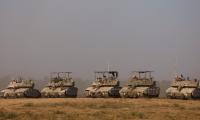The writer holds a PhD from the University of Birmingham, UK and works in Islamabad.
In the first part of this series of articles we have discussed some basic policy concepts; here we look at development policy and its related ideas. First, let’s be clear about the difference between development and progress which are interchangeably used in everyday parlance, but have their distinct features in development discourse.
Development and progress are closely related, in that both show a movement towards a goal; but progress tends to have a more linear pattern of growth denoting steady improvement. Whereas development has a much wider scope of growth and movement, focusing on the expansion of all aspects and directions. In academic literature there are myriad definitions of both, but here for our functional understanding we may say that progress is a part of development. Development gives us a much bigger picture with progress in many related areas. Every area of progress becomes a factor in development.
There is also an element of permanent and temporary change. Development is longer lasting while progress may be short-lived and may act like a step to the next level. Progress is normally measured with tasks which are done, so you track progress by tracking tasks. Progress mostly looks at the process that is contributing to development which is evaluated with outcomes and impacts and not by tasks. A common problem with policies – including development policy – is that they get too entangled in measuring progress in individual areas while neglecting overall development.
That is the reason the UN tried to incorporate a comprehensive framework of global goals for sustainable development (SDGs) in 2015. Many progress-oriented people have criticized the SDGs for their fairly wide scope, but that was perhaps necessary to make it as comprehensive as possible because here we are dealing with development which can only materialized when we achieve progress in multiple directions. We will discuss SDGs in more detail in our next articles in this series; here we want to be clear about some more basic concepts used in development policy that will help us in our discussion.
Development policy uses terms such as civil society development, community development, discourse development, development advocacy, development benchmarks, development communication, development economics and economic development, development factors, human development, and many others. A confused understanding of these concepts results in misplaced priorities and prevents many activists and professionals in development policy to botch up their goals and hamper progress. Here we discuss some of them before proceeding to more detailed discussion of global goals of sustainable development (SDGs). Let’s start with the concept of development policy itself, which at times can be confusing.
We have discussed earlier the concepts of development and policy separately. The locale of development policy can be at least at five different places. As public and social policy, development policy is the domain of governments which consult with other stakeholders and draft a development policy. Sometimes, development policy is not a single policy but a collection of multiple policies, such as education and health policies that can become parts of a larger development policy. The second locale of development policy can be international development agencies that fund development projects in other countries.
In that locale, mostly rich countries have their development arms such as America has USAID, Britain has the Department for International Development (DfID) or UKaid, Canada had the Canadian International Development Agency (CIDA) which is now defunct and has been replaced by Global Affairs Canada. They function as catalysts for development in countries that need development aid. These agencies have their own development policies and also help other countries in drafting new development policies. A third locale of development policy is multilateral agencies such as various arms of the UN, World Bank and WHO. They also have their development policies and help others too in developing such policies.
The fourth locale of development policy is both national and international civil society organizations working in advocacy and development, such as the Aga Khan Foundation, Care International, Grameen Bank, Human Rights Commission of Pakistan, Medicine sans Frontiers, Plan International, Water aid, and many others. They may have their own development policies. Finally, the fifth and perhaps the last locale of development policy is related with the corporate social responsibility (CSR) of big businesses. For example, Engro Corporation and Hashoo Group in Pakistan have well-functioning CSR departments. Sometimes their efforts come under a broad-based development policy which they may also call human development policy.
So, development policy can be created by governments as their social policy. In that they may be helped by bilateral and multilateral international organisations such as the UN. Businesses, donor agencies, civil society, and human rights organizations may have their own development or human development policies.
Then, what are the differences and similarities between development policy and human development policy? In the 20th and 21st centuries, there have been various approaches to development such as capacity development; community, democratic, and economic developments; human development; human-rights or simply rights-based approach to development; participatory development; social development, and others.
There is a strong school of thought in development policy which considers capacity development as the engine of human development. As countries face climate change, economic crises, food shortages, and health challenges such as the current Covid-19 pandemic, developing capacities of businesses, civil society, communities, government and state institutions becomes imperative. Most development policies fail just because there is not enough capacity in the concerned stakeholders to implement the policy and its related strategies. This was evident with the MGDs and now it is becoming even clearer in the aftermath of Covid-19.
Community development is concerned with bringing community members together for collective action that may generate solutions to common problems. This is much more difficult than capacity development, as individuals can learn but don’t often come together to solve community problems. That’s where the roles of activists and citizens become crucial and that’s why many governments and states frown upon civil society that tries to bring people together for common cause. Professionals and technocrats are allowed to function but civic leaders are disliked or even targeted as they become vocal and challenge the dominance of certain groups.
Community development is directly related to democratic development. The more democratic society is, the more likely it is to have functioning community-based organizations and local bodies. Without democratic development, community development is a mirage as it may show progress in certain projects which in most cases are not long lasting; and that is the bane of development policy even in the 21st century. Since authoritarian governments discourage democratic development in its true sense, their community development efforts fail. And that brings us to economic development which is a staple for most governments to show their progress.
In many cases, economic development is confined to a narrow concept of economic growth, without resulting in human development. It is true that human development is hardly possible without economic development and growth, a limited outreach of economic growth may stint human development as it has happened in countries such as Pakistan. We have had better economic growth in the past but are still very low on human development. That’s why there is an increasing stress now on human development as a fundamental or human right. That is called a rights-based approach to development.
In this approach to development policy, people must have wider choices to lead a long and healthy life, with proper education and a decent standard of living. This also entails freedoms of expression, movement, and other human and political rights including self-respect, as integral elements of human development.
No development policy can claim to be directed towards human development if it does not take into account basic human rights. So, in the final analysis a good development policy tries to expand the opportunities that people have to lead meaningful lives.
Concluded
Email: mnazir1964@yahoo.co.uk
Reportedly, many tourists from other provinces have left the Swat valley too
As young girls grow up under norms of oppression and abuse, they are almost certain to encounter various forms of GBV
Till quite recently, it all seemed dark as state institutions were locked up in bloody tentacles of forces of brute...
RCI recently held its founding conference in Italy, which has been described by organizers as a stunning success
Bosnia is probably the only Muslim-majority country in mainland Europe
14-point plan released by the government lacks the urgency and transformative potential that an actual emergency demands







